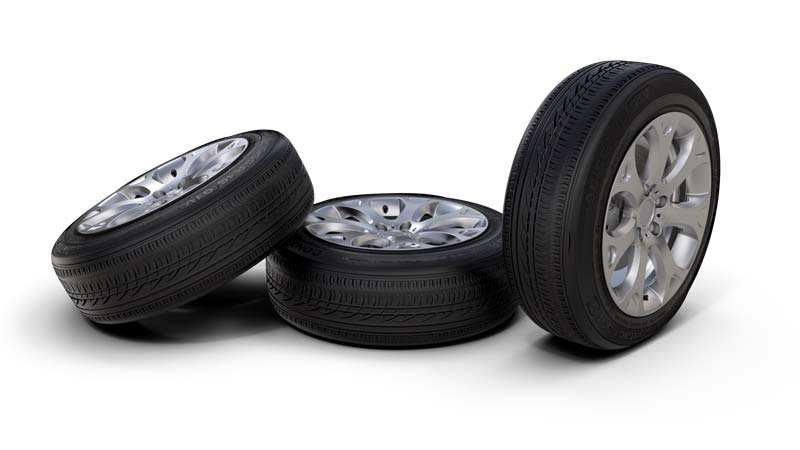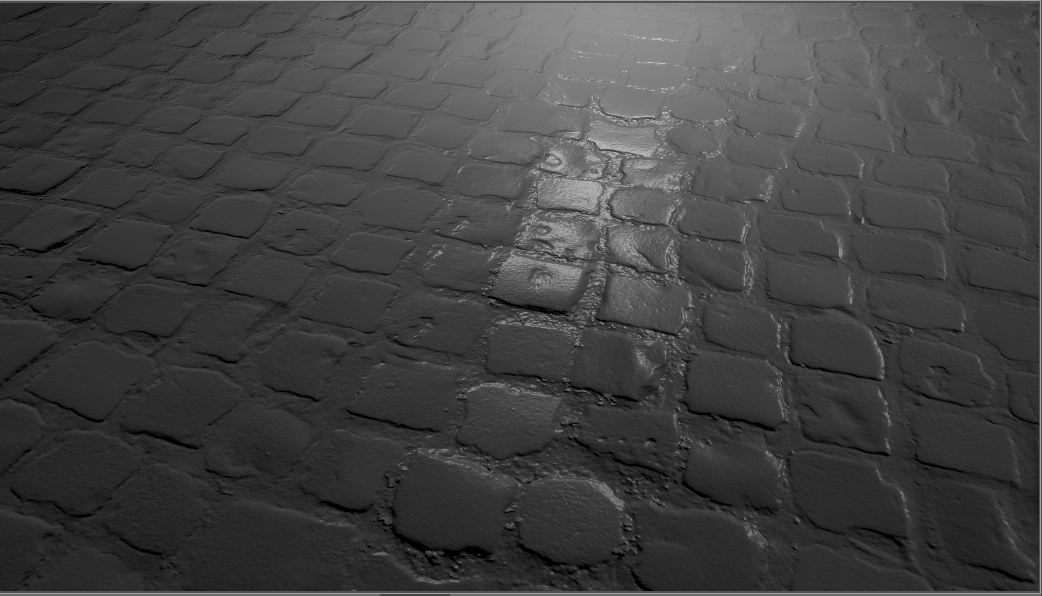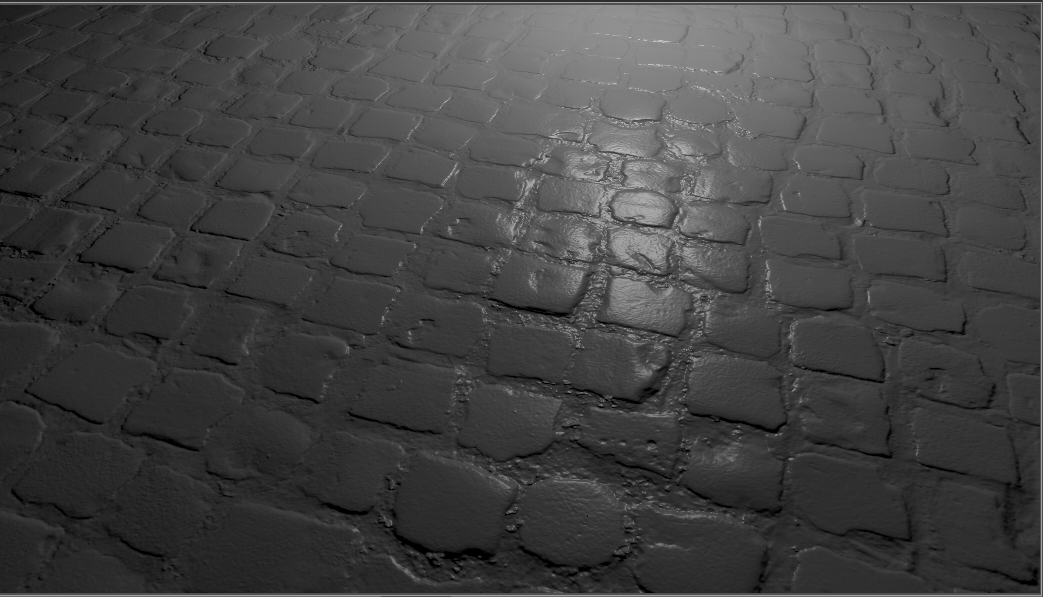Tire

Tire material supports several surfaces and structures for rim and profile within a single texture. Rubber shading rounds off whole thing. The tire material texture settings allow the accurate placement and wrapping of textures to fit a tire shaped object.
Tire Material
Diffuse Color - Sets the diffuse reflection color of the material. Use the slider to change the brightness. Click the color field on the right to open the color chooser. Assigning a texture to the diffuse color projects it onto the surface. The appearance is a combination of the defined color and the assigned texture.
Glossy Color - Sets the material’s color for surfaces glossy reflections. Use the slider to change the brightness. Click the color field on the right to open the color chooser. Assigning a texture to the glossy channel defines areas in which different gloss intensities appear with the help of a texture. The glossy color depends finally on both the defined color and the assigned texture file.
Roughness - Controls the sharpness of the glossy reflections. The higher the value, the rougher the microscopic structure of the surface and more diffuse the reflections.
Reflectivity - Controls the intensity of reflection on the surface. The higher the value, the more the influence from environment and objects around.
Texture Settings
Get Values from Object - Attempts to guess the correct Rotation Axis, Center, Markings Scale, and Profile Repeat V from the object's boundings.
Rotation Axis - Sets the rotation axis.
Center X/Y/Z - Sets the brush projection center. To center the projection pivot automatically, select an object and click Get Values From Object. The selected object center is used as projection pivot.
Repeat Profile UV - Sets the U and V repetition of the profile texture.
Scale Markings - Sets the texture scale value for the marking texture.
Blend Position - Sets the marking and profile texture blend position.
Anisotropy - Sets the texture filter quality for the image texture. Use the following as a guide:
- A value of 0.0 switches the filtering to normal bilinear filtering without mipmapping.
- A value of 1.0 uses normal trilinear filtering with mipmapping.
- Values between 1.0 and 16.0 will use anisotropic filtering.
- A value of 16.0 is the maximum and provides the highest filtering quality.
Diffuse Texture
Use Markings - Enables or disables the use of an image as a texture. When enabled, it loads an image texture to be applied to the tire sides for the diffuse color channel. The image is used as a pattern on the surface sides.
Use Profile - Enables or disables the use of an image as a texture. When enabled, it loads an image texture to be applied as the tire profile for the diffuse color channel. The image is used as a pattern on the surface middle.
Input Gamma - Sets the texture image gamma correction. Lower values increase the contrast of the texture. A value of 0.0 sets the texture to use a sRGB gamma correction.
Use ICC Profile - If selected, the texture colors are interpreted based on an embedded color profile if present. If a color profile is missing, it is assumed that the colors are stored in sRGB.
Glossy Texture
Use Markings - Enables or disables the use of an image as a texture. When enabled, it loads an image texture to be applied to the tire sides for the glossy channel. The image is used as a glossy pattern on the surface sides.
Use Profile - Enables or disables the use of an image as a texture. When enabled, it loads an image texture which is applied as the tire profile for the glossy channel. The image is used as a pattern on the surface middle.
Input Gamma - Sets the texture input gamma correction. A value of 0.0 sets the texture to use a sRGB gamma correction.
ICC Profile - If enabled, the texture colors are interpreted based on an embedded color profile, if present. If a color profile is missing, it is assumed that the colors are stored in sRGB.
Bump Texture
Use Markings - Enables or disables the use of an image as a texture. When enabled, it loads an image texture to be applied to the tire sides for the bump structure. The image is used as a bump pattern on the surface sides.
Use Profile - Enables or disables the use of an image as a texture. When enabled, it loads an image texture which is applied as the tire profile for the bump structure. The image is used as a pattern on the surface´s middle.
Flip U and Flip V - Switches the orientation of the U and V tangent directions stored in the normal or bump map of the markings texture. The profile texture should always be a height map and therefore flipping should not be required.
To fix the normal map's tangent vectors orientation, change one of these and see if it corrects the issue. If it doesn't, disable that option and enable the other, or Enable both Flip U and Flip V. These options enable VRED to support different kinds of normal maps, as they provide a solution for aligning the normals.


Incorrect with Flip U disabled Corrected with Flip U enabled Note:When using Flip U or Flip V for a normal map, the Parallax Intensity value should be kept at 0.0, as the height cannot be estimated in this case.
Bump Intensity - Controls how high the bumps display on a surface. Higher values make the surface appear bumpier. Negative values will invert the bump effect.
Parallax Intensity - Sets the amount of parallax shift interpretation of the bump image texture.
For further information on the other attributes, see the following:
